Historic Structures:
Lake Waccabuc, Castle Rock,
Marilyn Monroe, and more
Where the name came from
According to early documents, the Indians called the lakes Wepack or Wepuck. Students of the Algonquian language believe this to be a corruption of the compound word wequa-paug. The earliest available translation of the name appears as “Long Pond” on a deed of 1701 granting land from the Indian Chief Catoonah to the citizens of Stamford. And it appears again on a 1729 deed transferring land from Tapporneck and his Indians to the Ridgefield Proprietors. It may have been that the Indians used the word Wepack to refer to the three lakes as a whole. Thus the name Long Pond applied collectively to the three-lakes system. Individual names began to appear regularly on documents in the 1830s. Long Pond became the name associated specifically to Lake Waccabuc. The current name of Lake Waccabuc, a reversion to the Indian wequa-paug came into use around 1860 with the opening of the Waccabuc House.
1940s aerial photo of the three lakes, looking west. In the foreground, Lake Oscaleta is on the left and Lake Rippowam on the right. Lake Waccabuc is at the top of the photo
Feb 2015 photo taken by drone camera operated by Peter Treyz. Lake Waccabuc is at the center top of the photo.
The three lakes occupying the northeast corner of Lewisboro were formed some twenty thousand years ago during the Wisconsinan Ice Age. Their documented history began with the arrival of the first settlers and the establishment of the town of Salem in 1747. Lake Rippowam is fed by springs and small streams from Long Pond Mountain. From there the water flows southward by way of a short channel into Lake Oscaleta and then further west into Lake Waccabuc. In each of the three lakes there are places where the bedrock has remained exposed; one can see the tracks of glacier in the form of parallel grooves running east/west with the long axis of the lake.
Waccabuc Island (private)
The Ovens
On Waccabuc Island, a softer region of bedrock has weathered into a series of small, cave-like recesses. The Indians that inhabited this area a few hundred years ago treated these “ovens” with reverence, believing them to have been provided by the Great Spirit.
Click to view full size.
The Ovens and glacier-grooving of the bedrock
Waccabuc Country Club boathouse (private), c. 1890s
At the WCC beachfront, off Perch Bay Road
Originally built in early 1890s by Robert Hoe III, it was structurally upgraded and given a facelift in 1982.
In addition to Auntie Deb’s Boathouse being dragged over the ice to various locations on the lake, another building underwent the same fate: a small cabin originally built a short distance to the east of Castle Rock during the 1800s. The Meads acquired this land around the turn of the century and kept the cabin as a sort of clubhouse for the Mead girls, hence its name the “Hen’s Roost.” Later it was used for family parties and picnics and eventually became known simply as “the Roost”. At some time around 1940, it was moved to the west end of the lake, and then a number of years later, it was moved to its present location alongside the Waccabuc Country Club beach house.
2016 photo of the Waccabuc Country Club’s boathouse at their beachfront on the lake
Castle Rock (on private property)
60’ high granite outcropping on the north side of the lake
2016 – view from a kayak
A postcard from 1908
Marilyn Monroe
On July 1, 1956 Marilyn Monroe and Arthur Miller held a Jewish wedding ceremony in Waccabuc, at the home of Miller’s literary agent, Kay Brown. Brown resided on the private East Ridge Road. They were not married, as is popularly and incorrectly and frequently related, at Mead Memorial Chapel. However, the photograph does show that Marilyn visited it.
The wedding of Marily Monroe and Arthur Miller at the East Ridge Road home of his literary agent
Marilyn Monroe seated in front of Mead Chapel
The elephant in the lake
No historic account of Waccabuc would be complete without some mention of the Waccabuc elephant. According to the story, an elephant died on or near Mead Street during the early to mid 1800s, was dragged out onto the frozen lake, weighted with chains and scrap iron, and left to sink into the lake when the ice melted. This story has been passed by word of mouth for more than 150 years, but its multiple variations cannot be traced to any source and verified. But in those days, there were several circuses which had their headquarters in North Salem, and local farmers were often called upon to keep circus animals in their barns during the winter months.
Barnum & Bailey Circus did have a farm in Somers and occasionally elephants would be sheltered in the Waccabuc House’s barn on Mead Street, as they traveled back and forth from NYC to Somers.
In 1960, a group of skin divers searched the bottom of Lake Waccabuc for evidence to support the story but found nothing conclusive.
Taking the canoe out from Waccabuc Hotel boathouse; Castle Rock is in the background
An old postcard, date unknown




